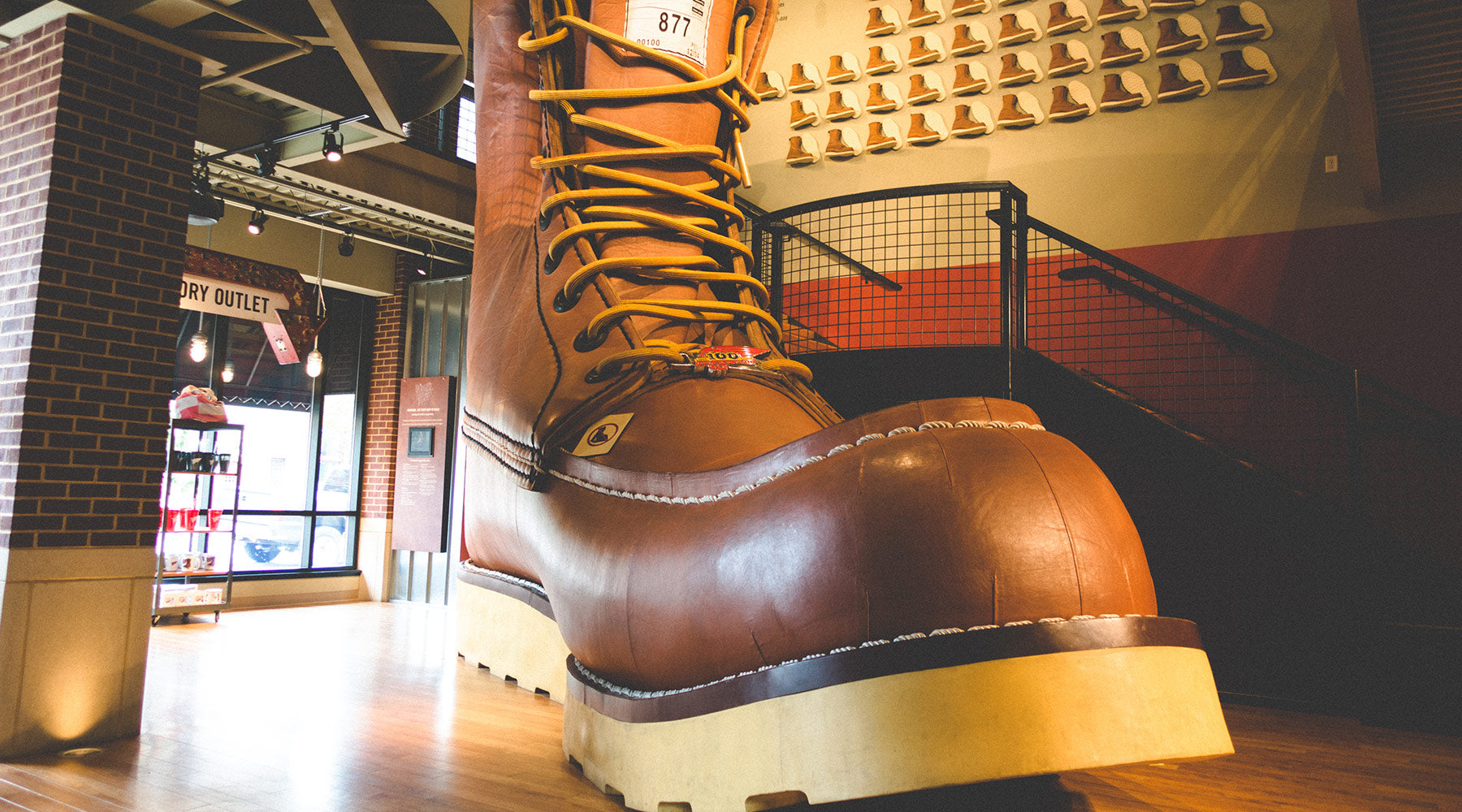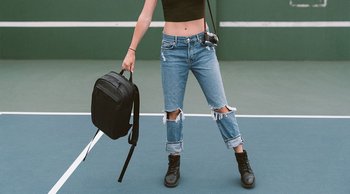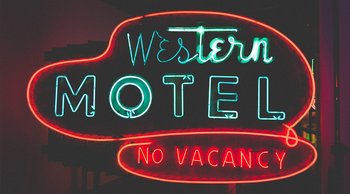Your Cart is Empty
8 American Made Boots and What You Didn't Know about Them

American made leather boots are not cheap these days, but they are also very different from cheap sneakers that will fall apart in a matter of months.
There are a few things that attract me to quality boots - craftsmanship, how long these companies have been making their products, and overall rebellion against cheap $20 widely popular footwear that has no soul, no longevity, and no visual appeal. My first pair of quality boots I bought about four years ago. Since then, I began to buy/collect/wear pretty much all of the brands that will be mentioned here.
![]()
There are tons of articles and roundups like “6 boots you must buy this fall.” So I’m not aiming to compete with that. In this article, I wanted to collect some interesting and not widely known facts about the iconic American bootmakers: Lucchese, Red Wing Shoes, White’s Boots, Wesco, Chippewa, Frye, Wolverine, and Danner.
You’ll notice that all of these companies are pretty old and have been selling shoes for decades. Most of them also launched their manufacturing around the same time, but back then there was no Instagram to easily find competitors and get more likes with influencers. They had to rely on other methods to be successful, something we will all need to learn once this buzz of social media influencers and fake likes goes away.
Quick note: even though most of these brands still make their boots in the USA, please always check the country of origin for any boots you buy. Frye, Wolverine, and Chippewa have only certain styles that are still USA made, everything else is made in China.
Lucchese Boot Company

Founded:1883
Origin: San Antonio, Texas
Current Location: El Paso, Texas
Current Owner: Arena Brands Inc. (also owns Stetson Hats)
Previous Owners: Lucchese family, Blue Bell Corporation (also owned Wrangler)
Boots I own: 1883 Brown Leather Western Cowgirl Cowboy Boots
Website:lucchese.com
Founded by immigrants from Sicily, Sam (Salvatore) Lucchese and his brothers, Lucchese was born as a combo of highest Italian bootmaking standards and a pretty open market for cowboy (back then they were Spaniard style boots) boots in America. Sam realized that Europe is too competitive and is was also time for him to explore the New Land.

Growing up, he used to repair boots, so this was nothing new to him. Sam was only 15 when we founded the company. He was an expert in Spanish boots and saw an opportunity.
Sam was always a forward thinking perfectionist and an avid advocate for latest technologies. Because of this, the bootmaking operations for Lucchese were unbelievably efficient, precise, and always of highest quality standards.
They say you can’t survive 100 years without making something for the Army, and Lucchese is no exception. You’ll see that in the history of other brands as well. Fort Sam in Houston was the biggest client for Lucchese. Production volumes and factory capacity were one of the deciding factors for the Army, obviously in addition to quality.

The profits from selling shoes Sam invested in real estate, but not for rent as we all can easily assume. He quickly realized that he needs to go into media production to turn his products into the most desirable footwear in America. He hired several skilled managers to run the theater and this operation kept bringing new actors, directors, and all the glamor of Hollywood to Texas. Of course, most of the acts were about the Western culture and they all wore Lucchese boots on stage.

Eventually, Lucchese began to make custom pairs for Bing Crosby, John Wayne (who wore Lucchese boots for over 50 years), and John Lennon.
Sam Lucchese died at the age of 61 and his son took over the operation. In the 70s, the popularity of all things Western began to fade, and so did the sales of Lucchese. Still handmade in Texas by generations of skilled bootmakers, these boots were always recognizable by poppy extravagant designs.
Since the start and to this day, Lucchese makes custom boots. A pair can cost you $4,000-8,000 these days, depending on your taste.
Lucchese was sold to Wranger (their parent company to be exact) and sold several more times after that. But the standards instilled by Sam Lucchese are still the driving force behind the brand to this day.
Red Wing Shoes Co.

Founded: 1905
Origin: Red Wing, Minnesota
Current Owner: Privately owned
Boots I own:Clara Women’s Boots
Website:redwingheritage.com
Red Wing, a small industrial town in Minnesota, only 1:30 hrs away from Minneapolis, is definitely a charismatic and a proud one. For over 100 years the generations of the local residents have been making some of the best boots in America. We know Red Wing Shoes today are these $300 handmade quality boots that only people with money can afford. But here is a quick recap of where people wore Red Wings throughout the history of America:
- Empire State Building builders
- Most of the workers at NYC skyscrapers back in 1920s
- Route 66 construction workers
- Hoover Dam builders
- WWI and WWII soldiers
- National Parks builders and rangers
- Woodworkers nationwide
- Electric line builders, bringing electricity to millions of Americans
- And the list goes on...
You can almost say that America as we know if today was built in Red Wings. Only now most of the population opts in for $40 sneakers.

Red Wing made specialty boots, of all sizes. Back then America was experiencing the industrial growth and it’s almost impossible to name something that was built in America where workers didn’t wear Red Wing boots. Nobody else was offering such quality specialty footwear and so Red Wing almost completely owned that market.
Their museum shows a wall of all sizes for the widely popular Mock boot and the display looks very impressive.




Always known for their narrow specialty in product lines, Red Wing Shoes only recently started making and marketing the boots to our generation - those who appreciate quality boots that will last you forever and for those who can also afford the $300+ price tag.
Red Wing takes custom orders, but usually in large quantities of pairs.
Back in 1930s, a pair of Red Wing shoes cost $3.50- 7.00, which converts to the modern day $70-100. So we pretty much pay triple now.
White’s Boots

Founded: 1902
Origin: West Virginia
Relocated: Spokane, Washington
Current Owner: Lacrosse Footwear (also owns Danner Boots)
Boots I own: none
Website:whitesboots.com
For over 150 years White’s Boots have been making custom shoes based on their 5 popular boot models. Most of the customers preferred White’s Boots because their had irregular feet that needed specific adjustments.
When you go to their website, don’t be fooled by the pretty basic and hard to navigate website. The product will speak for itself when you hold a pair in your hands. It looks like they’re in the middle of the web redesign, so hopefully soon the site will do justice to the products.
The production is pretty small and you can wait for your pair for over 10 weeks. A few configurations of the boots I wanted to make can run around $800-1,000.
They have two models of boots that have no changes since they were originally designed 150 years ago.

White’s boot care products are considered some of the best out there. I personally own their boot cream, which is the best maintenance item you’ll need in addition to a cleaning cloth. It was recommended to me by the managers of a Portland store Animal Traffic that specialized in quality boots and clothing. I bought my Chippewa and Red Wing boots here over the last couple of years.
Couldn’t find many more interesting facts. If you know of any, please comment at the end of the article.
Wesco (West Coast Shoe Company)

Founded: 1918
Origin: Scappoose, Oregon
Current Owner: Looks like still family owned
Boots I own: none, but would love a pair ofBlack Widow
Website:wescoboots.com
Wesco boots, a brand I learned about only recently, has a range of boots that covers pastimes from mountainside to motorcycle. They also have technical models for electric workers and firemen (with additional fire resistant layers), and policemen on motorcycles.
They also make boots for alpine climbers, something they don’t promote widely but are really well known for if you’re into climbing. Interesting fact: many famous climbers who conquered Mount Everest did it in Wesco boots.
Most of the boots are made to order and take up to 12 weeks to be produced. The pair I was customizing was around $600. Personally, I have a bit of a hard time with so many customization options and would be nice to see some popular pre-defined styles.

Wesco is proud of its rebuilding service. When your boots are a little too well worn, you can send them in to Wesco where they’ll be professionally inspected and the parts replaced accordingly. The service is guaranteed to cost you a whole lot less than a new pair.
Chippewa Boots

Founded: 1901
Origin: Chippewa Falls, Wisconsin
Current Owner: Justin Brands (also owns Ariat, Tony Lama, Justin Boots, etc.) Side note: Justin Brands is owned by Warren Buffet’s Berkshire Hathaway, which also owns Walmart, See’s Candy, and many others.
Boots I own:Renegade Original Lacer Boots
Website:chippewaboots.com
Chippewa Boots was founded in the state where Chippewa tribes lived. The logo of the company is an exact replica of the tribe symbol (I don’t think it’s called a logo and seems a bit disrespectful to call it that).

The brand initially focused purely on making boots for the paper production industry, back then already a pretty developed one. Workers dealt with heavy wood pieces, saws, and other necessary equipment that was needed to produce paper. Chippewa focused on protective boots to minimize the risk of injuries during work.
Chippewa boots were much thicker and sturdier compared to other consumer boots of those times. What was setting Chippewa apart was not only the quality of the boots but also the efficiency of production cycles. They were the best in their industry at the time. 175 people were making 2,000 pairs of boots each day.

Later, Chippewa focused on woodworkers, firemen, and other specialty professions. Only recently, similarly to Red Wing, they decided to market casual lines of shoes for everyday wear.
A common distinguishing feature of Chippewa boots is the Indian design influence and ornaments.

Since the first day, Chippewa aimed to make the best boots in America. They were the first ones in the USA boot making to use:
- Verbatim Italian soles
- Horween leather
- 3M inventions
So you can say Chippewa is a perfect combo of classic look, American heritage, and cutting edge technologies.
The Frye Company

Founded: 1863
Origin: Marlboro, Massachusetts
Relocated: New York, USA
Current Owner: Li & Fung, which is now Global Brands Group
Boots I own: Gemma Block Slip and Mindy Chukka (both discontinued)
Website:thefryecompany.com
The oldest bootmaker in America, Frye’s boots were the largest boot manufacturer up until 1890. Frye’s was the first boot company to convert from steam to electric power.
Back in 1940s Frye’s started using Goodyear welt technology that allowed the boots to “breathe.”
Because of the large production volumes, the price for the boots was not crazy expensive. This definitely helped them to gain nationwide popularity.
When the company was sold to Li & Fung (also licensee and maker of Coach, Calvin Klein, Guess, Michael Kors, and many other shoes for brands), the prices for the boots jumped up. Yet, this still didn’t stop celebrities to wear Frye Boots.

In the 1950s Frye’s began making cowboy boots, something I personally thought they were doing long before that and are the classic American cowboy boots brand.
In 1943-45, Frye’s was making boots for the army, but the biggest success came when they release a post-war Jet Boots. The soldiers were coming back home, and as with other industries, most companies had to adapt the products to post-war generation. For example, Harley-Davidson saw the rise in bike customizations and the birth of custom parts and artwork as a way to express yourself.

In the 1970s, they released The Campus Boot (less edgy cowboy boot), which was marketed as shoes for the free spirited student generation. So halfway through the history of the brand, they began to have niche focus and that seemed to pay off.Those student shoes used to sell $18 per pair or $33 for two pairs, which in our current value would be $60-70 per pair and not the triple digits we pay now.

Another decade later, with the clever branding campaign “Why Frye?” (something very similar to our modern "Just Do It" Nike motto) they saw a huge spike in sales. But even that cannot save a company when the quality of products begins to fall off the cliff.
The quality got so bad that people had to buy smaller sizes of Frye shoes just because after wear they’ll eventually take shape of the actual needed size.
The history of how many times they company switched ownership looks pretty sad compared to how everything got started. Reebok bought Frye in 1987 and then sold 2 years later. The full history of sales, in case you want to get a bit depressed or just curious about this stuff, is here.
Once an American shoe maker, now Frye has most of its shoes made in China. Only a select few models are still American Made.
Wolverine

Founded: 1883
Origin: Rockford, Michigan
Current Owner: Wolverine World Wide, Inc. (Also owns Hush Puppies and Merrell and makes shoes for Harley-Davidson and Caterpillar. Recently added Saucony, Sperry, and Keds to their portfolio of brands.)
Boots I own: none at the moment
Website:wolverine.com
How do you start a business with $2,900 in 1883? You buy a leather shop. Then you build a power plant, and after that, you create your own tannery. And after 40 years in business, you fully focus on shoes, leading to unbelievable growth right before the Great Depressions and, of course, military contracts during WWII.
During the Depression, Wolverine didn’t cut any of its workers, while most other businesses were not able to stay afloat in the same way. Right after the 1930s, Wolverine developed pigskin gloves, that are now pretty much a standard for construction.
In the 50s, when it became more challenging and costly to use horse skin, Wolverine develops a special technology and opens up another brand called Hush Puppies. In the 60s one in every ten Americans was wearing Hush Puppies. Production couldn’t keep up, and a new plant was opened in Canada.
In the 1980s, Wolverine’s research department couldn't keep up with the requests for new innovations and so they opened Biomechanical Engineering Laboratory at Michigan State University and formed the International Design Center in Montecatini, Italy. Bold moves but looks like those paid off considering how well the company is doing these days.
A decade later, the breakthrough innovations started to pop up from the research labs. DuraShocks technology was among the first ones. They called it the comfort technology, which in simple terms absorbs shock extremely well and send some of this compressed energy back to your feet so you feel lighter and can withstand longer working hours with more comfort.

Around the same time, Wolverine begins making boots for Cat Footwear (Caterpillar). And after a few new inventions, they decided to create a new brand that would put all the new technologies and advancements on display. They bought the company called Merrell (which was in business for 16 years already) and it took off incredibly well.
The heritage collection from Wolverine can definitely join Red Wing and Chippewa in celebrating the tradition of boot making but offering it for the casual everyday wear. 1,000-mile boots are probably what will interest you most. They haven’t changed since 1914 when the original patterns and lasts were made.
A last is the shape of the foot you’d use to wrap leather around it to keep the perfect shape. It’s basically like a mold to keep consistent shoe design. Lasts are made by the model by size. Sometimes they are used for years and there are skilled craftsmen who repair and maintain these lasts for most brands. I personally have seen Red Wing lasts, rows of them when I was visiting Red Wing on one of my trips.
I got so excited that I walked into Red Wing HQ where they had to tell me to chill and cross the street to enter the museum and store. It was pretty epic to see the Silicon Valley style receptionist in Red Wing, Minnesota. I loved every minute of being in that town. I bought my first Red Wing boots there and crossed the street to buy the high socks for them in the local Swedish store for them.
Interestingly, 1,000 miles is not that much for walking. It’s just 3-4 years of daily wear and quite a bit of walking each day. Sorry, driving your car in those won’t count.
Danner

Founded: 1932
Origin: Chippewa Falls, Wisconsin
Relocated: Portland, Oregon
Current Owner: Lacrosse Footwear Co. (Also owns White’s Boots)
Boots I own:Mountain Light Cascade
Website:danner.com
In 1932, right in the middle of the Great Depression, when labor was at the highest $0.30 per hour and many of the raw supplies were cheap to get, Charles Danner decides that there is no better time than now to start a new business in Wisconsin.
He and five of his employees made a great pair of boots that retailed for $4. In the Pacific Northwest at that time, similar boots were $14-15 per pair. Charles moved the business to Portland in hopes of leading the market with his boots. Portland already had a pretty developed network of ports and local manufacturing that could use a quality pair of boots for any worker.

WWII began and new orders for the boots from the US Army ramped up daily production volume to 240 pairs of boots (medium size business).
In the 1960s in one of the speeches, President John F. Kennedy speaked about the importance of outdoor recreation, the health of the nation, and participation in sports. The next days, one of Danner sons Bill, who was running the business at that time, called one of the models “Hiking boots” and overnight turns Danner into the only hiking boot maker nationwide.
Hiking generation grows and heavy boots are replaced by a more manageable in weight Danner boots, which become the standard in the industry. Danner 6490 are pretty much the perfect hiking boot and Backpacker magazine called them that in the summer of 1975 (see the whole issue of the 1975 magazinehere). Later the model was renamed into Mountain Light and currently costs $380 compared to $54 back in 1975.
$54.00 in 1975 had the same buying power as $251.20 in 2017. This website can convert any historic prices to modern day equivalents: dollartimes.com

In 1976, Danner makes 480 pairs per day, still a relatively medium size business. A few years later Danner gets a military contract. Then again in 2010, this time they created two brand new models, USMC RAT and Army Combat Hiker, and almost overnight Danner moves into a manufacturing facility double its previous size.

Bill Danner sold the company to a private investor in 1983, and then to LaCrosse Footwear, which also owns White’s Boots and which helped bring the new military contracts.
Conclusion
It's very interesting to see all the similarities and differences between these brands. They all deeply value quality and craftsmanship. Some remained as private companies and others were part of buying other brands, in case of Wolverine, or being purchased like Frye, Danner, and White's Boots.
To me, having even one pair of boots from any of these brands is a purchase worth making. This article took quite a bit of time to put together. So if you like it, please subscribe to the email updates or share this on socials.
Sources/Image Credits
https://goo.gl/RmvLYf
https://www.lucchese.com/ourheritage/
https://www.tshaonline.org/handbook/online/articles/fluan
http://www.italoamericano.org/story/2016-12-22/lucchese-boot-company-texas
http://www.chron.com/business/article/The-story-of-Lucchese-boots-a-true-Texas-original-10323557.php#photo-6671755
https://www.lucchese.com/shop/mens/boots/el-paso/
https://www.bizjournals.com/twincities/stories/1997/11/03/focus2.html
http://www.fundinguniverse.com/company-histories/red-wing-shoe-company-inc-history/
http://www.highsnobiety.com/2013/11/22/redwing-heritage-fall-winter-2013/
http://www.oregonlive.com/playbooks-profits/index.ssf/2014/07/lacrosse_footwear_acquires_whi.html
http://www.retail-merchandiser.com/index.php/reports/retail-reports/132-whites-boots
https://www.theworldofshoes.com/stories/brands/whites-boots/
http://www.wescoboots.com/wesco/pdf/WESCO_HISTORY_BROCHURE.pdf
https://davesnewyork.com/blog/history-of-chippewa-boots/
http://ezinearticles.com/?A-Brief-History-of-Chippewa-Boots&id=4027620
https://www.reddit.com/r/goodyearwelt/comments/27p32h/brand_spotlight_chippewa_boots/
http://www.bootedman.com/wiki/doku.php?id=frye.history
http://www.thefryecompany.com/our-story
http://www.thefryecompany.com/timeline
http://footwearnews.com/2010/business/news/li-fung-jimlar-deal-lauded-73406/
https://en.wikipedia.org/wiki/Wolverine_World_Wide
http://www.wolverine.com/US/en/about-us-our-story/?sma=sm.00001dfnlqlmcfdi6xc72wa4ubahj
http://www.wolverineworldwide.com/about-us/history/
https://www.danner.com/about-danner
http://www.schnees.com/product/danner-history-heritage/brand-information-and-history
http://www.oregonlive.com/playbooks-profits/index.ssf/2013/11/danner_boots_more_than_80_year.html
https://www.styleforum.net/threads/nicks-boots.378424/page-2
https://www.ropedye.com/2015/07/the-bootery-launches-european-wesco-boots-webstore/
http://www.chippewaboots.com/heritage/
https://stylecourt.blogspot.com/2013/10/american-history-frye.html
http://www.mastgeneralstore.com/blog/mast/2015/08/every-step-a-legacy
http://www.chattanoogashoe.com/wordpress/brands/frye-boots/about-frye-boots/
http://www.artofmanliness.com/2009/09/21/a-good-boot-the-wolverine-1000-mile-boot-giveaway/
http://thebootguy.com/danner-light-30440/
http://www.wolverine.com/US/en/heritage/
http://www.acontinuouslean.com/2009/02/02/first-look-wolverine-heritage-collection/
https://www.portlandmade.com/alfredo-contreras-danner/
http://www.oregonlive.com/playbooks-profits/index.ssf/2012/05/danner_boots_of_portland_craft.html
https://andyp1966.wordpress.com/2015/02/09/fryes-and-platforms-a-continental-divide/
http://chasmarchitecture.com/portfolio/lucchese-boots/
http://www.chron.com/houston/article/Lucchese-boot-thief-on-the-loose-in-Houston-5794283.php#photo-2569351
http://knue.com/you-know-youre-from-texas-if/
https://hypebeast.com/tags/whites-boots
Also in Asilda Blog

Why I started Vlogging - My 3 Reasons
The first month of vlogging is done and now I get asked more and more about why I started all this, and especially right now. So here are my three reasons.
Read More
Cecilia Humboldt Camera Backpack Review
Join me in reviewing this Cecilia Humboldt 14L in Black Leather Camera Backpack I got to test out. The leather is buttery smooth and the bag is very enjoyable to use.
Read More
Neon Signs: A Symbol of America
When you think Americana, neon signs are always a big part of the visual. In this article, you'll find out about the history of neon signs...
Read More
